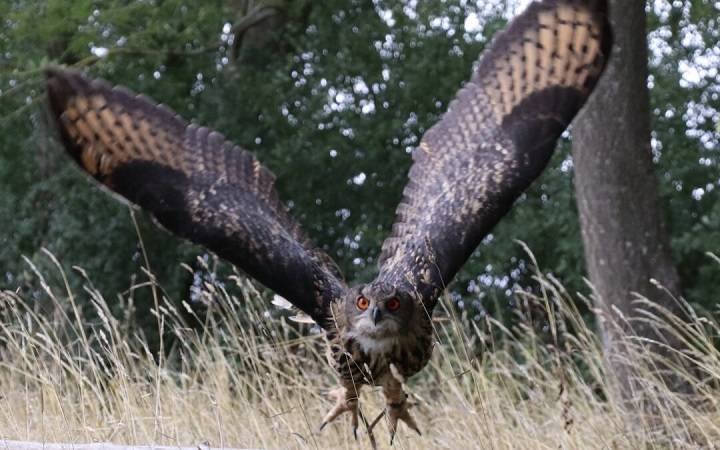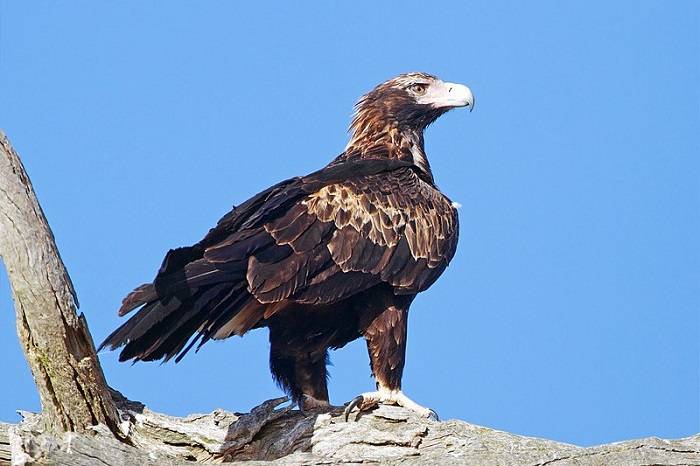Eagles are renowned for their impressive size, formidable talons, and keen eyesight, making them some of the most iconic and majestic birds of prey in the world. From the soaring wingspan of the mighty Harpy Eagle to the sleek profile of the Golden Eagle, eagles come in a variety of shapes and sizes, each adapted to its unique habitat and hunting strategies. In this blog post, we embark on a fascinating journey to compare the sizes of different eagle species, exploring their physical characteristics, habitat preferences, and ecological roles in the natural world.
Understanding Eagle Anatomy: Key Physical Features
Before delving into eagle size comparison, it’s essential to understand the key physical features that distinguish these magnificent birds of prey. Here are some of the primary anatomical characteristics of eagles:
- Wingspan: The wingspan of an eagle refers to the distance from the tip of one wing to the tip of the other when fully extended. Wingspan varies significantly among eagle species and is an important factor in determining their flight capabilities and hunting strategies.
- Body Length: Body length refers to the distance from the tip of the eagle’s beak to the tip of its tail. While body length provides a general indication of an eagle’s size, wingspan is a more accurate measure of its overall dimensions.
- Weight: Eagle weight can vary widely depending on factors such as age, sex, and geographic location. Larger species tend to weigh more than smaller species, with adult females typically being larger and heavier than males.
Eagle Size Comparison: From Smallest to Largest
- Little Eagle (Hieraaetus morphnoides):
-
- Wingspan: Approximately 1.2 meters (3.9 feet)
- Body Length: 45–55 centimeters (18–22 inches)
- Weight: 1–2 kilograms (2.2–4.4 pounds)
- Habitat: Woodlands, grasslands, and open habitats across Australia and parts of Southeast Asia.
- Bald Eagle (Haliaeetus leucocephalus):
- Wingspan: Approximately 1.8–2.3 meters (6–7.5 feet)
- Body Length: 70–102 centimeters (28–40 inches)
- Weight: 3–6.3 kilograms (6.6–13.9 pounds)
- Habitat: Coastal areas, lakes, rivers, and marshes across North America.
- Golden Eagle (Aquila chrysaetos):
- Wingspan: Approximately 1.8–2.3 meters (6–7.5 feet)
- Body Length: 66–102 centimeters (26–40 inches)
- Weight: 2.5–7 kilograms (5.5–15.4 pounds)
- Habitat: Open mountainous regions, grasslands, and steppes across North America, Europe, and Asia.
- Steller’s Sea Eagle (Haliaeetus pelagicus):
- Wingspan: Approximately 2.2–2.45 meters (7.2–8 feet)
- Body Length: 85–105 centimeters (33–41 inches)
- Weight: 6.8–9 kilograms (15–20 pounds)
- Habitat: Coastal areas, estuaries, and sea ice habitats in Russia, Japan, and the Korean Peninsula.
- Harpy Eagle (Harpia harpyja):
- Wingspan: Approximately 2.2–2.5 meters (7.2–8.2 feet)
- Body Length: 86–107 centimeters (34–42 inches)
- Weight: 4–9 kilograms (9–20 pounds)
- Habitat: Tropical rainforests of Central and South America.
Factors Influencing Eagle Size
Several factors contribute to the size variation observed among eagle species:
- Habitat: Eagles living in open habitats, such as grasslands and savannas, tend to have longer wingspans and larger body sizes to facilitate efficient soaring and hunting over vast distances. In contrast, eagles inhabiting dense forests may have shorter wingspans and more compact body shapes to maneuver through dense vegetation.
- Dietary Preferences: The size and availability of prey species in an eagle’s habitat can influence its body size and weight. Eagles that prey on larger mammals or fish may exhibit larger body sizes and higher weights compared to species that primarily feed on smaller prey.
- Geographic Variation: Eagle populations inhabiting different regions may exhibit subtle variations in size and morphology in response to local environmental conditions, including climate, prey availability, and competition with other predators.
Ecological Roles of Eagles: Apex Predators and Keystone Species
Eagles play a vital role in maintaining the ecological balance of their habitats as apex predators and keystone species. As top predators, eagles help regulate prey populations, control invasive species, and promote ecosystem stability. Additionally, eagles contribute to nutrient cycling through their feeding behaviors, scavenging activities, and deposition of organic matter, which enriches the soil and supports plant growth.
The World’s Largest Birds of Prey
Despite their cultural significance and ecological importance, many eagle species face conservation challenges due to habitat loss, pollution, poaching, and human-wildlife conflicts. Conservation efforts, including habitat protection, captive breeding programs, and public education initiatives, are crucial for ensuring the long-term survival of these magnificent birds of prey and the ecosystems they inhabit.
Related Post:
Deciphering the Ideal Space Requirements for Ducks
Unveiling the Mysterious Egg-Laying Habits of Ducks
Exploring the Essential Role of Duck Grit in Avian Health
Eagles are remarkable birds of prey that come in a range of sizes, shapes, and colors, each adapted to its unique ecological niche and hunting strategies. From the majestic Bald Eagle soaring over North American rivers to the formidable Harpy Eagle reigning over the rainforests of South America, eagles captivate our imagination and inspire awe and admiration. By understanding and appreciating the diverse characteristics and ecological roles of eagles, we can foster a deeper appreciation for these magnificent birds and work together to ensure their conservation and protection for future generations to enjoy. So the next time you catch a glimpse of an eagle soaring high above the treetops, take a moment to pause, reflect, and marvel at the wonders of nature’s feathered kings of the sky.




